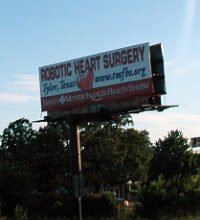EXCLUSIVE POST – “To Err Is Human” is the title of the now famous book from the Institute of Medicine on patient safety published about a decade ago. From it we learned that anywhere from 44,000 to 98,000 individuals die each year of preventable medical errors (and other sources suggest the number might even be much higher). In this continuing series of posts on disruptive and transformational technologies, there are some that can have an impressive impact on improving patient safety.
EXCLUSIVE POST – “To Err Is Human” is the title of the now famous book from the Institute of Medicine on patient safety published about a decade ago. From it we learned that anywhere from 44,000 to 98,000 individuals die each year of preventable medical errors (and other sources suggest the number might even be much higher). In this continuing series of posts on disruptive and transformational technologies, there are some that can have an impressive impact on improving patient safety.
Since procedure and surgically related errors along with medication errors are the most frequent causes of error-related death, the focus of safety efforts logically starts there. At the request of the Army’s Telemedicine and Advanced Technology Research Center, I developed a report on the “Hospital of the Future” from which this post is adapted.
There are three elements to an effective safety program: 1] culture, 2] human factors considerations, and 3] technologies. This post is about technologies so I will ignore the other two but note that they are absolutely critical and need to be in place before technologies will have much impact. (For more details see Surgical Innovation, Jun 2007; 14: 127 – 135)
A few technologies can have major short and long term impact on medication and OR/procedure safety. Computer order entry of medications (CPOE) along with alerts and embedded knowledge will reduce medication errors. Pharmacy robots today can select medications ordered by CPOE and checked by the pharmacist via the pharmacy information system; can produce injectables and can dispense outpatient medications – all with less personnel time and with greater speed and accuracy. Unit or OR cabinets that release medication only upon password entry by staff and concurrence with the CPOE ordered medication followed by positive identification of drug and patient by barcode or RFID will add to the safety of administration. Identification devices such as RFID can be used to track medications from receipt at the loading dock to final administration to the patient.
Improved electronic medical records with wireless access to all digitized data can reduce the problem of inadequate patient data in the OR or procedure suite. Surgeons and the rest of the OR staff need to have “situational awareness” of critical but not extraneous information about the patient in real time. Efficient aggregation of critical data in an easy to read and ergonomically accessible “white board” can improve OR staff situational awareness and thereby reduce errors. Identification devices such as RFID can track patients, staff, equipment and instruments to ensure that all are in the right place at the right time. If a required instrument is not available, it will be known well before the operative case begins and hence corrective actions can be taken in advance. Video can assist in command and control, training, recordation and recall of events in the OR. For example, cameras on the OR wall, in the laparoscope, and in the overhead lights can record actions during surgery for purposes of later or concurrent out-of-the OR teaching or for review of procedural prowess. When an error is discovered later, the video is available for review. Although some surgeons feel this is intrusive, it can actually be their best defense if challenged that they made an error. Technical mastery on simulation equipment should be an integral part of all surgical training programs and should become the requirement for procedure-based physicians’ credentialing and continuing certification as was discussed in an earlier post. Longer range, OR robotics will reduce errors by increasing accuracy, reducing tremor and other movements, creating “no fly” zones and interacting with imaging and simulators to create an individualized operative plan for each patient.
This post is about technologies however it is critical to understand that the best technology advances are of little value unless and until culture and human factors are effectively addressed. I discuss these in some detail in The Future of Health Care Delivery – Why It Must Change and How It Will Affect You
In the near future, there will be a much greater demand for safer, higher quality medicine emanating from regulatory mandates, patient’s expectations, and hospital board of trustees dictates. To respond to these expectations, health care professionals and hospitals will need to address fundamental issues of individual and institutional culture and human factors and then incorporate many of the new technologies described.
In addition to improving safety, these technologies have the potential to also address many of the other critical issues affecting the practice of medicine. These include enhancing professional productivity, enhancing responsiveness to patients, controlling cost escalation, and improving quality of care overall. These technologies can be especially helpful in enhancing the effectiveness of medical care in treating complex, chronic diseases.
Physicians appropriately long to have reform of the malpractice approach in America. But our hand is weak when others can point to the large number of preventable errors that occur every day. It behooves us as professionals to personally and communally address safety aggressively.
Stephen C Schimpff, MD is an internist, professor of medicine and public policy, former CEO of the University of Maryland Medical Center and consults for the US Army (where many of these technologies were initiated and where the information in this blog was initially developed). He is the author of The Future of Medicine – Megatrends in Healthcare and The Future of Health Care Delivery- Why It Must Change and How It Will Affect You” from which this post is adapted. Updates are available at http://medicalmegatrends.blogspot.com






_5-250x220.jpg)

